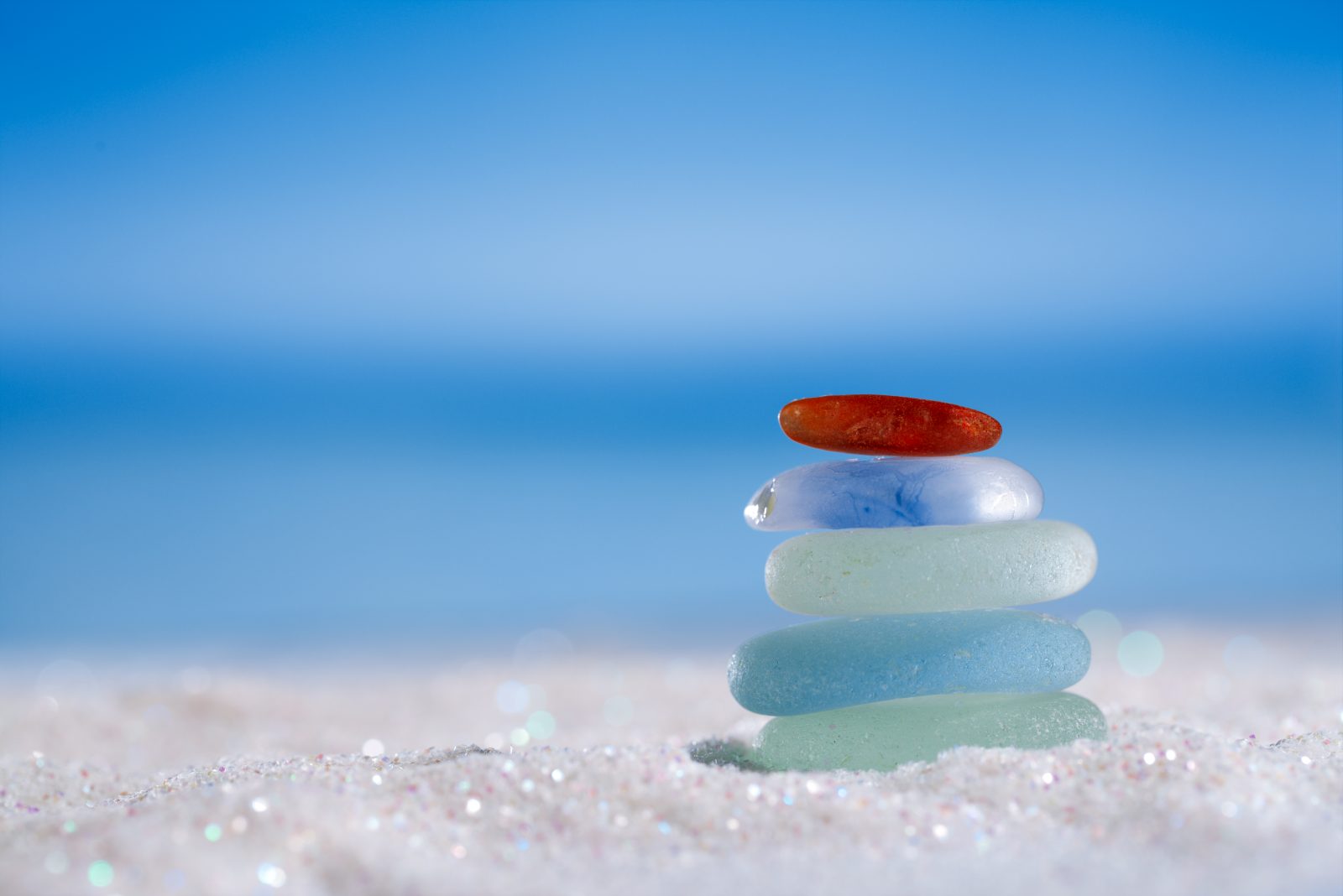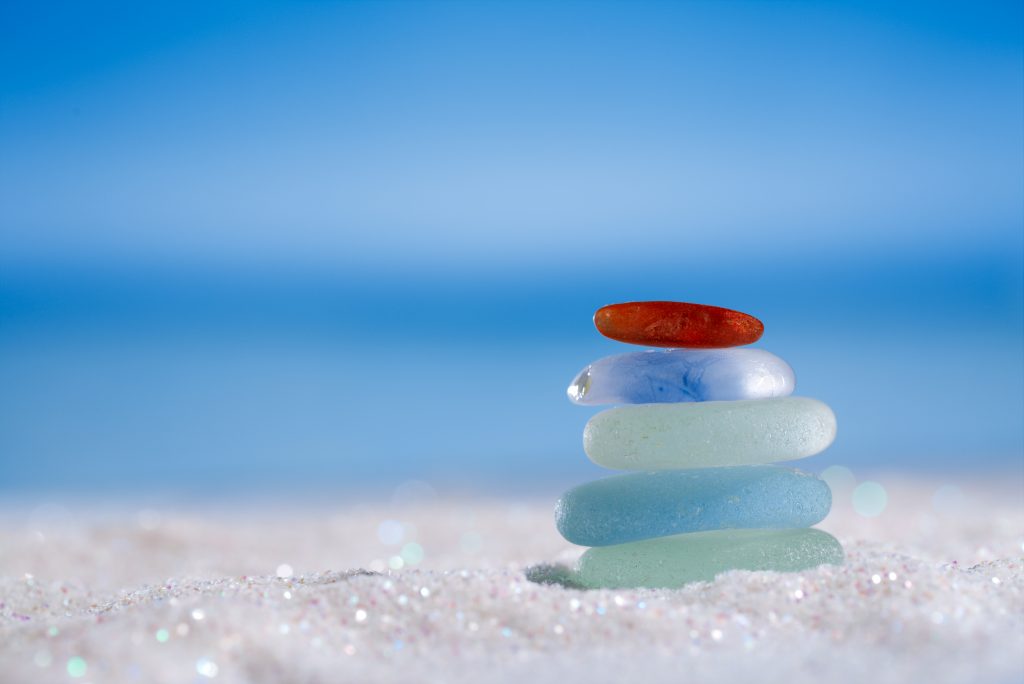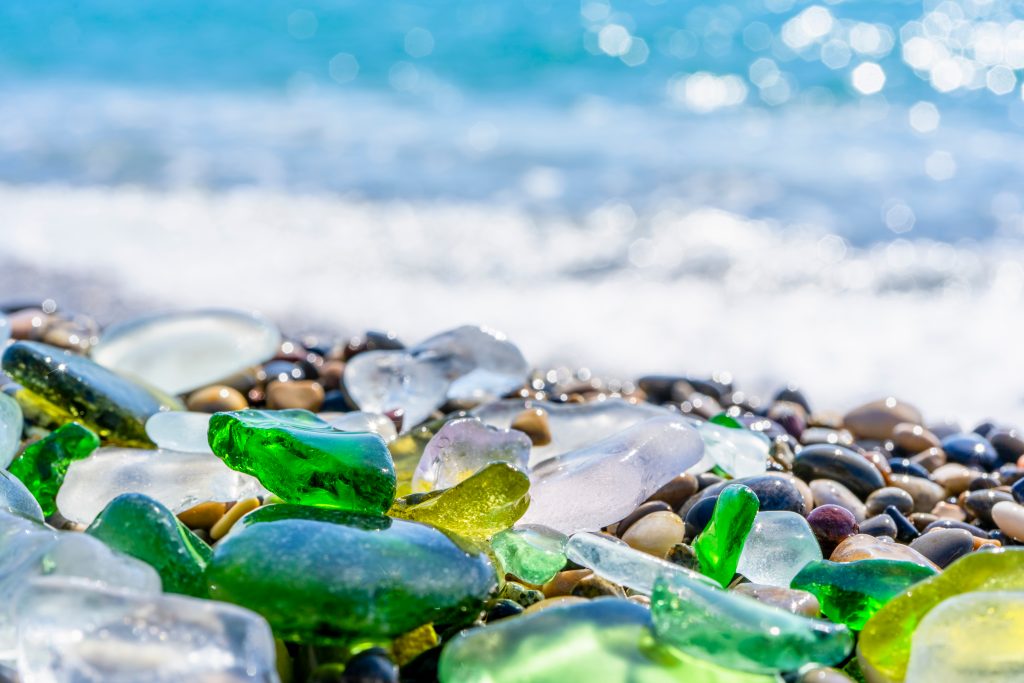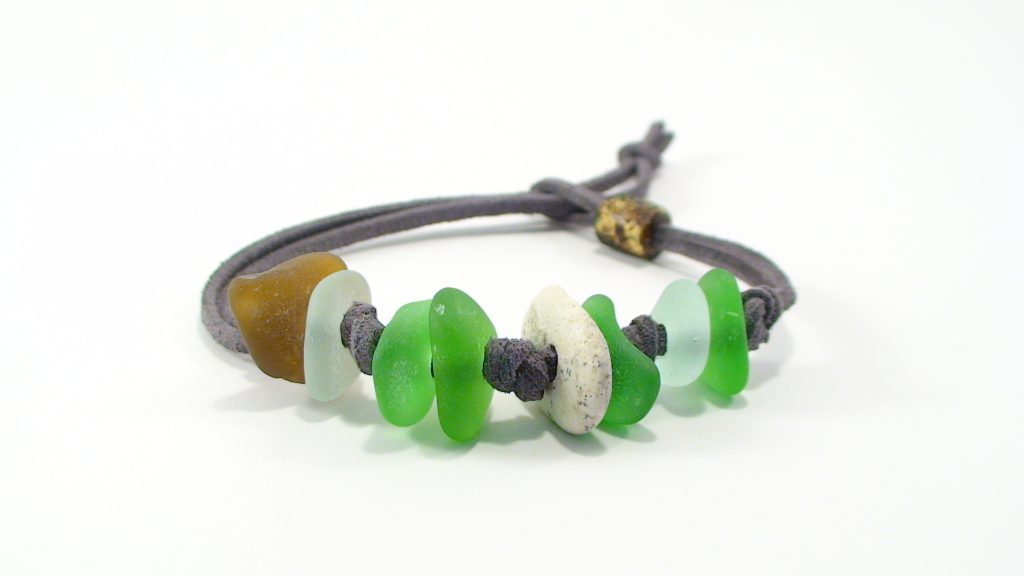Treasures in the Sand


There are many ways to enjoy a visit to the beach. From surfing to sunbathing, the sand’s edge encompasses some of the most enjoyable human experiences. For some, the preferred activity involves little more than wandering the shore with a pair of keen eyes looking for treasures in the form of sea glass.
By Eric Herman
On the northern California coast, right by Fort Bragg, you’ll find a very colorful stretch of shoreline known as Glass Beach, or Glass Pebble Beach. As implied by the name(s) it’s a long stretch of rocks and sand famous for its abundance of multi-colored sea glass. It’s a place where the sand appears to be made mostly of gemstones.
Far from unique, Glass Beach is one of numerous coastal locales where sea glass can be found in large quantities. But even outside of those places, sea glass exists in lesser quantities along countless beaches the world over. While there are places where there is no sea glass at all, the material is there to be found if you go looking for it in a wide range of locations.
Although it’s been with us for a long time, although not forever (more on that below), sea glass has garnered increasing attention in recent years as many people have come to cherish it for it rich palette of colors, irregular smooth shapes and unusual man-made/natural origins.
These days, sea glass, and products that incorporate it, has become something of a cottage industry. It’s particularly popular in jewelry, but it’s also in other decorative items such as dishware and decorative surfaces in kitchens, bathrooms and as part of furniture design.
As a result, the collection of sea glass has become a hobby for a growing number of people, or, at least, it’s become a good excuse to spend hours walking along the beach and sifting sand through your fingers. The beach I frequented as a kid growing up in southern California, fabled surf “Mecca,” Huntington Beach, always had sea glass mixed in the sand. Back in the 70s, we referred to the tiny colorful pieces as “nerdles.”
All those many years ago, I remember knowing people who were using these modest treasures to festoon leather goods, hair pieces and baubles of all types.
WHAT IT IS
Sea-glass jewelry artist, Jane Claire McHenry describes the origin of sea glass on her website:
“While it would be more pleasing to say that sea glass is a term for some type of naturally forming material, the fact is that it begins its journey to beauty as nothing more than ordinary glass, mostly old bottles and jars, broken dishware and even glass windshields and tail lights from older cars. In the days before municipal landfills, people simply buried their trash, or if they lived near the water, they dumped it into the ocean thinking that it would just disappear.
“While some of the trash was taken away by the currents or simply biodegraded over time, much of the now broken glass stayed close to the shore where it traveled with the waves up onto the beach and then back into the ocean, over and over again, tumbling incessantly back and forth with the rocks and sand.”
Although no one really knows for sure how long it takes to turn an improperly discarded jam jar into a piece of sea glass you find in the sand, it is believed the process takes decades and, in some cases, more than 100 years. In a very real sense, sea-glass is a very special accidental collaboration between human wastefulness and nature. It’s a rare example of a form of pollution beautifying the world, rather than destroying it.
That irony is not lost on sea-glass enthusiasts who now often use the term “reverse gemstones” to describe the material.
WORTH ITS WEIGHT
The value of sea glass ranges from essentially nothing to expensive, usually depending on the scarcity of the color. Not surprisingly, clear pieces are extremely common, with colors like cobalt blue and seafoam green being among the scarcest and most sought after for jewelry making.
Because of the popularity and potential profitability associated with sea glass, there are now companies manufacturing artificial sea glass. As purists point out, however, those products lack the richness of color and irregularity of shape compared to the stuff processed by nature.
The quest for sea-glass authenticity has led to the formation of the North American Sea Glass Association, whose mission to sign up members who pledge to never use manufactured sea glass.
McHenry writes: “Authentic sea glass is not clear or shiny and it is not always perfectly shaped. It has a more weathered, natural look and feel. Because it’s been broken down by time, tumbling, and salt water, the chemical composition of the glass has actually changed through a natural dehydration process, a critical reason why it looks different than manufactured, tumbled glass.”
Back at Glass Beach, which happens to be on a particularly scenic stretch known as the Redwood Coast, no one is allowed to collect the glass. As a result of that prohibition, the amount of glass visible is vast, although maybe not quite as pervasive as some photos lead you to believe.
I can’t help but the believe that many people who visit there probably surreptitiously collect a few samples for themselves. Being something of a rule follower, I personally did not, at least not there.
The reason Glass Beach has so much sea glass? Many years ago there was a nearby glass factory that illicitly deposited its waste into the ocean.
Opening image by Oveskyfly | Shutterstock, second image by ellinaxxIv | Shutterstock, bottom image by Lena_AI | Shutterstock.











